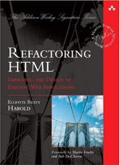I’m in process of migrating this site to a new (and cheaper) host than GCP. This is not a quick or easy operation. More thoughts on that later. Meanwhile a few things are likely to be wonky. In particular:
1. Fixed – No SSL/https until the domain is migrated to a new registrar (about two weeks)
2. Fixed – IPv6 still goes to the old site.
3. Single page articles hit a critical error, perhaps due to an old theme that needs to be updated. Investigating…
Read the rest of this entry »
This entry was posted
on Thursday, January 9th, 2025 at 1:03 pm and is filed under Web Development.
You can follow any responses to this entry through the Atom feed.
You can skip to the end and make a comment. Pinging is currently not allowed.
If you’re reading this, you’ve stumbled across the HTTPS secured and IPv6 enabled version of the Cafes. This has moved from a classic shared Linux server on pair.com to App Engine Standard on GCP. The transition is still in progress and was not without bumps.
Read the rest of this entry »
This entry was posted
on Saturday, November 18th, 2017 at 10:24 am and is filed under PHP, Web Development.
You can follow any responses to this entry through the Atom feed.
Both comments and pings are currently closed.
I’ve upgraded this site to WordPress 2.6. Please holler if you notice any problems. Thanks.
This entry was posted
on Saturday, August 2nd, 2008 at 9:01 pm and is filed under Web Development.
You can follow any responses to this entry through the Atom feed.
You can make a comment or trackback from your own site.
Here’s part 15 of the ongoing serialization of Refactoring HTML, also available from Amazon and Safari.
The very first step in moving markup into modern form is to make it well-formed. Well-formedness is the basis of the huge and incredibly powerful XML tool chain. Well-formedness guarantees a single unique tree structure for the document that can be operated on by the DOM, thus making it the basis of reliable, cross-browser JavaScript. The very first thing you need to do is make your pages well-formed.
Validity, although important, is not nearly as crucial as well-formedness. There are often good reasons to compromise on validity. In fact, I often deliberately publish invalid pages. If I need an element the DTD doesn’t allow, I put it in. It won’t hurt anything because browsers ignore elements they don’t understand. If I have a blockquote that contains raw text but no elements, no great harm is done. If I use an HTML 5 element such as m that Opera recognizes and other browsers don’t, those other browsers will just ignore it. However, if the page is malformed, the consequences are much more severe.
First, I won’t be able to use any XML tools, such as XSLT or SAX, to process the page. Indeed, almost the only thing I can do with it is view it in a browser. It is very hard to do any reliable automated processing or testing with a malformed page.
Second, browser display becomes much more unpredictable. Different browsers fill in the missing pieces and correct the mistakes of malformed pages in different ways. Writing cross-platform JavaScript or CSS is hard enough without worrying about what tree each browser will construct from ambiguous HTML. Making the page well-formed makes it a lot more likely that I can make it behave as I like across a wide range of browsers.
Read the rest of this entry »
This entry was posted
on Monday, July 14th, 2008 at 8:36 am and is filed under Refactoring HTML.
You can follow any responses to this entry through the Atom feed.
You can make a comment or trackback from your own site.
Here’s part 14 of the ongoing serialization of Refactoring HTML, also available from Amazon and Safari.
XSLT (Extensible Stylesheet Language Transformations) is one of many XML tools that work well on HTML documents once they have first been converted into well-formed XHTML. In fact, it is one of my favorite such tools, and the first thing I turn to for many tasks. For instance, I use it to automatically generate a lot of content, such as RSS and Atom feeds, by screen-scraping my HTML pages. Indeed, the possibility of using XSLT on my documents is one of my main reasons for refactoring documents into well-formed XHTML. XSLT can query documents for things you need to fix and automate some of the fixes.
Read the rest of this entry »
This entry was posted
on Thursday, July 3rd, 2008 at 7:42 am and is filed under Refactoring HTML.
You can follow any responses to this entry through the Atom feed.
You can make a comment or trackback from your own site.
